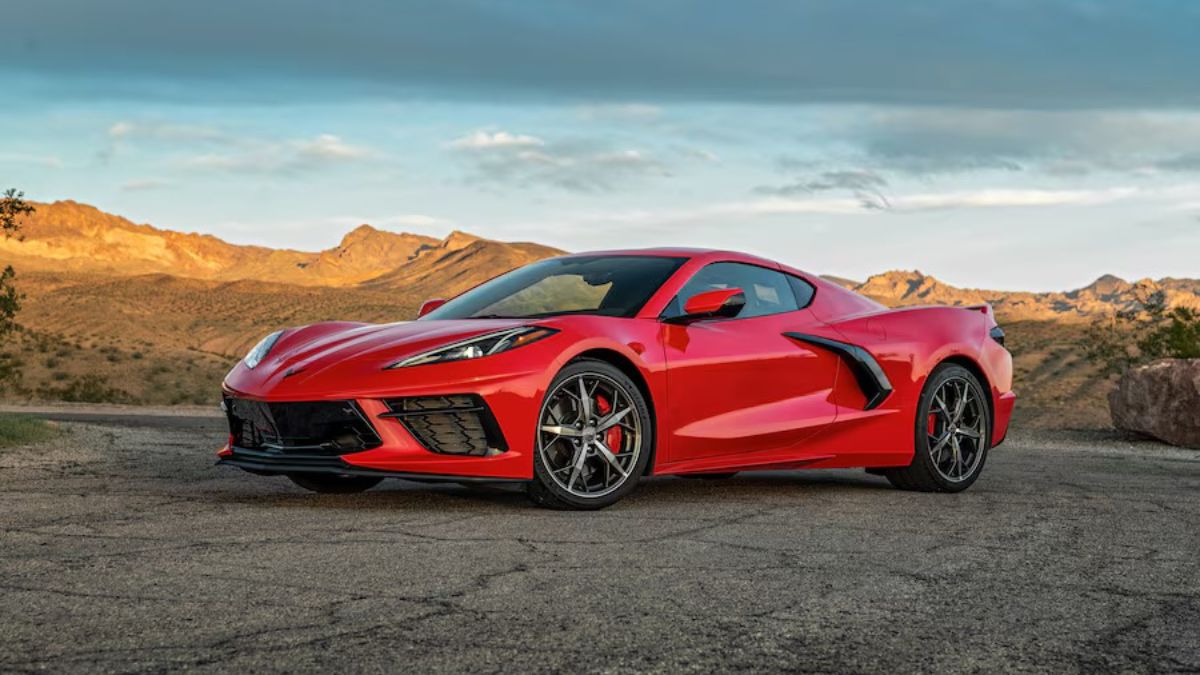
Advertisement
DETROIT — Tadge Juechter, the long-time executive chief engineer of the Corvette, retired this week after nearly 47 years with General Motors. His final project, the 2025 Chevrolet Corvette ZR1, epitomizes his career’s contributions to the iconic sports car.
Juechter, who began his journey with GM researching the market potential for the Corvette ZR1 in 1985, has witnessed the evolution of the brand from a high-performance niche model to a symbol of American automotive excellence. The newly unveiled 2025 Corvette ZR1 is the most powerful and fastest version ever, marking a fitting culmination to Juechter’s tenure.
In his retirement interview, Juechter shared his thoughts on the future of Corvette, including plans for an all-electric model and the possibility of brand expansion. While GM has confirmed that an electric Corvette is in the works, a timeline has not been provided. Last year, the automaker introduced the E-Ray, a hybrid version that Juechter believes is a promising step towards full electrification.
“Electrification can enhance a car’s efficiency and performance,” Juechter noted. “The E-Ray is just the beginning. We’re committed to integrating new technologies in a way that resonates with our customers.”
Despite some resistance from Corvette enthusiasts towards electrification, Juechter is optimistic that the E-Ray will help ease fans into accepting electric performance vehicles.
Juechter also addressed speculation about a potential spin-off of the Corvette brand. Analysts have suggested that a Corvette sub-brand could be worth billions, but Juechter is not convinced that a spin-off is necessary. “Corvette is central to Chevrolet and GM’s identity,” he said. “It’s a valuable asset that we can leverage while keeping it within the GM family.”
Regarding the idea of expanding the Corvette lineup to include an SUV, Juechter was non-committal. Although the concept of a performance-oriented SUV might seem unconventional, brands like Porsche and Ferrari have successfully ventured into this market. Juechter indicated that any such developments would be considered in the future, but for now, the focus remains on maximizing the potential of the current mid-engine architecture.
Reflecting on his career, Juechter fondly recalled his personal connection to the Corvette, including his purchase of a sixth-generation 2006 Corvette Z06 and his recent acquisition of an eighth-generation Corvette Stingray convertible for retirement.
“It’s like choosing a favorite child,” Juechter said of his Corvettes. “Each one has its special qualities, but the Z06 was particularly memorable for me.” The Stingray convertible, his current daily driver, reflects his more leisurely approach to driving now that he is retired.
Juechter’s departure marks the end of an era for Corvette, but his influence will undoubtedly continue to shape the brand’s legacy.
DETROIT — Tadge Juechter, the long-time executive chief engineer of the Corvette, retired this week after nearly 47 years with General Motors. His final project, the 2025 Chevrolet Corvette ZR1, epitomizes his career’s contributions to the iconic sports car.
Juechter, who began his journey with GM researching the market potential for the Corvette ZR1 in 1985, has witnessed the evolution of the brand from a high-performance niche model to a symbol of American automotive excellence. The newly unveiled 2025 Corvette ZR1 is the most powerful and fastest version ever, marking a fitting culmination to Juechter’s tenure.
In his retirement interview, Juechter shared his thoughts on the future of Corvette, including plans for an all-electric model and the possibility of brand expansion. While GM has confirmed that an electric Corvette is in the works, a timeline has not been provided. Last year, the automaker introduced the E-Ray, a hybrid version that Juechter believes is a promising step towards full electrification.
“Electrification can enhance a car’s efficiency and performance,” Juechter noted. “The E-Ray is just the beginning. We’re committed to integrating new technologies in a way that resonates with our customers.”
Despite some resistance from Corvette enthusiasts towards electrification, Juechter is optimistic that the E-Ray will help ease fans into accepting electric performance vehicles.
Juechter also addressed speculation about a potential spin-off of the Corvette brand. Analysts have suggested that a Corvette sub-brand could be worth billions, but Juechter is not convinced that a spin-off is necessary. “Corvette is central to Chevrolet and GM’s identity,” he said. “It’s a valuable asset that we can leverage while keeping it within the GM family.”
Regarding the idea of expanding the Corvette lineup to include an SUV, Juechter was non-committal. Although the concept of a performance-oriented SUV might seem unconventional, brands like Porsche and Ferrari have successfully ventured into this market. Juechter indicated that any such developments would be considered in the future, but for now, the focus remains on maximizing the potential of the current mid-engine architecture.
Reflecting on his career, Juechter fondly recalled his personal connection to the Corvette, including his purchase of a sixth-generation 2006 Corvette Z06 and his recent acquisition of an eighth-generation Corvette Stingray convertible for retirement.
“It’s like choosing a favorite child,” Juechter said of his Corvettes. “Each one has its special qualities, but the Z06 was particularly memorable for me.” The Stingray convertible, his current daily driver, reflects his more leisurely approach to driving now that he is retired.
Juechter’s departure marks the end of an era for Corvette, but his influence will undoubtedly continue to shape the brand’s legacy.
